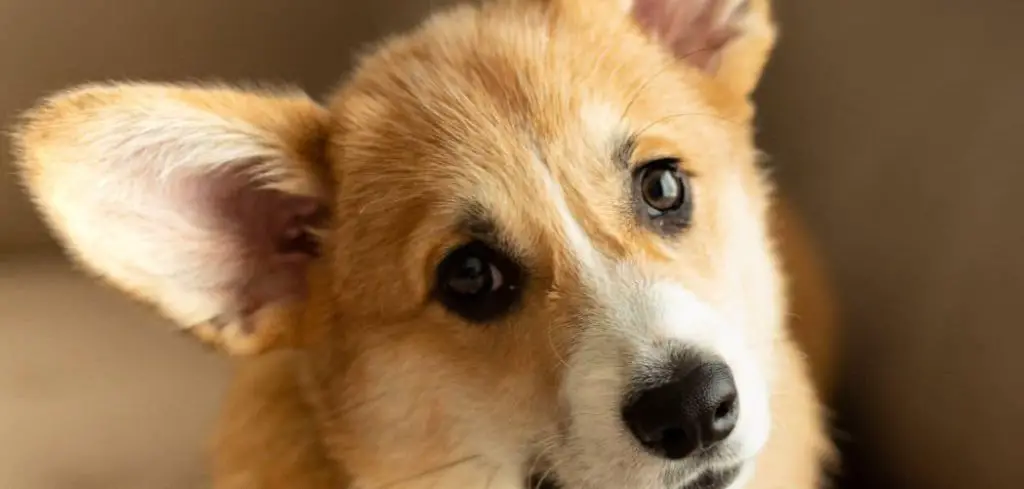It can be alarming to see your dog panting heavily right after a meal, especially if it’s unusual for them.
While mild panting can be normal, excessive panting after eating could signal a more serious underlying issue.
We outline the most common causes of a dog panting excessively after eating, what you can do at home, and when to seek veterinary help.
Dog Panting Excessively After Eating — Why It Happens
Excessive panting in dogs after meals can be caused by everything from indigestion to life-threatening conditions like bloat or heart problems. Dogs may also pant if they’re in pain, overheated, anxious, or reacting to a food-related issue such as an allergy or toxin.
Sometimes, it’s simply a reaction to eating too quickly or too much. Other times, it’s a signal that your dog’s heart, respiratory system, or digestive tract is under stress.

Dog Panting Excessively After Eating: Common Causes
Gastric Dilatation-Volvulus (Bloat)
Bloat is one of the most dangerous causes of excessive panting after eating. It occurs when the stomach fills rapidly with gas and then twists, trapping the contents and cutting off circulation.
Dogs experiencing bloat often pant, pace, appear distressed, and have a swollen abdomen.
This condition is life-threatening and common in large, deep-chested breeds. It can occur shortly after eating, especially if the dog exercised vigorously or gulped their food quickly.
Read more: Dog Panting and Always Hungry (Here’s Why)
Overeating or Eating Too Quickly
Dogs that eat too much or eat too fast may pant excessively as their body struggles to digest the food.
Panting may be accompanied by bloating (not torsion-related), discomfort, pacing, or attempts to vomit.
This issue is especially common in breeds like Labradors or Beagles, who tend to inhale food. It can also occur if your dog steals food or eats a much larger portion than normal.
Food Allergies or Sensitivities
If your dog is reacting to an ingredient in their food, panting could be a symptom of a mild allergic reaction.
Other signs might include scratching, diarrhea, gas, or vomiting.
The panting may come from mild swelling, GI upset, or inflammation that increases body temperature. It’s more common when switching foods or introducing new treats.
Heat or Environmental Triggers
Sometimes panting after eating isn’t the food — it’s the environment. If your dog eats in a hot room or after exercising, they may pant as a way to cool down.
A warm room, direct sunlight, or lack of ventilation can make post-meal panting more pronounced.
Older dogs and brachycephalic breeds (like Bulldogs and Pugs) are more susceptible to overheating after meals.
Heart Disease
Some dogs with underlying heart disease may show signs like panting or labored breathing after meals, especially if the heart is struggling to manage increased blood flow during digestion.
This may be accompanied by lethargy, coughing, or reluctance to exercise.
Panting after eating can be an early indicator, especially in senior dogs or breeds prone to heart issues.
Acid Reflux or Indigestion
Just like in humans, dogs can experience indigestion after meals. Acid reflux or mild GI distress may cause panting due to discomfort.
Your dog may seem restless, stretch repeatedly, or lick their lips.
Panting may resolve within 30–60 minutes, but if it’s frequent, your dog may benefit from smaller meals or a diet change.
What to Do If Your Dog Is Panting Excessively After Eating
Start by observing your dog closely. If the panting is brief and they seem otherwise normal, you can monitor them at home.
Make sure their eating environment is cool, calm, and not overly stimulating. Avoid feeding immediately after vigorous activity or play.
Try offering smaller, more frequent meals throughout the day rather than one large meal.
Use a slow feeder bowl if your dog tends to gulp food quickly.
If you suspect a food sensitivity, review recent dietary changes and consider reverting to their previous food to test for improvement.
Keep fresh water nearby, but avoid letting your dog drink large amounts too quickly after eating.
When to Call or Visit Your Vet
If your dog’s panting lasts more than 30 minutes after eating, or is accompanied by other symptoms, it’s time to seek help.
Look for signs such as:
A distended abdomen
Restlessness or pacing
Vomiting or unsuccessful attempts to vomit
Weakness, collapse, or pale gums
Excessive drooling or whining
These could be signs of bloat or another critical condition that needs immediate veterinary care.
Also consult your vet if panting after meals becomes a consistent pattern, especially in older dogs or those with known heart or respiratory issues.
Read more: Dog panting excessively (Should you worry?)
Key Takeaway
Panting excessively after eating is not something to ignore, especially if it happens regularly or comes with other symptoms.
While sometimes the cause is simple — like overeating or a hot room — other times, it could signal bloat, heart disease, or food-related sensitivities.
Monitoring your dog, adjusting feeding habits, and knowing when to seek veterinary help can keep your dog safe and healthy.
When in doubt, it’s always best to contact your veterinarian and describe exactly what you’re observing.
